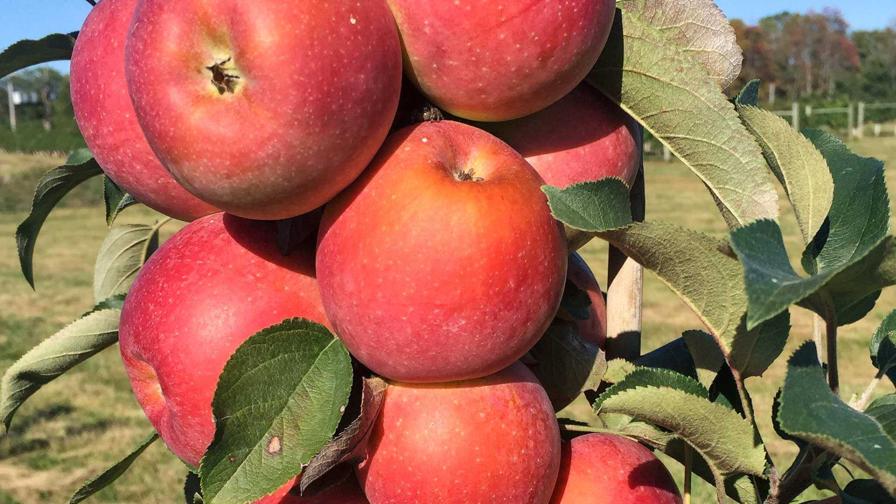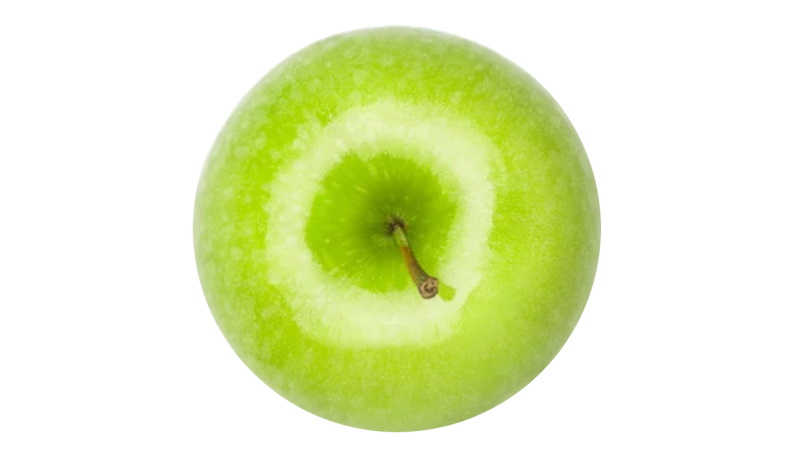For Apple Growers Who Want to Adapt, These Might Be the Perfect Picks

Two new apples developed by a University of Maryland researchers — one red and one yellow — are far easier to grow and could be better suited to a warming climate than traditional varieties. They are ‘MD-TAP1’ and ‘MD-TAP2’.
Photo courtesy of University of Maryland
Through careful crossbreeding and selection, University of Maryland researchers have developed what may just be the perfect apples for American growers trying to adapt to a changing world. The two new apples, a yellow (‘MD-TAP1’) and a red variety (‘MD-TAP2’) are heat-tolerant, blight-tolerant, low-maintenance, easy to harvest and tasty. Both have been approved for patents and are awaiting the final grant from the U.S. Patent Office.
The new Maryland varieties grow into much shorter trees, which makes harvesting easier; they also appear tolerant to fire blight, a destructive bacterial disease common to apples. Heat tolerance is another important feature of these apples. It’s one of the earliest characteristics Walsh and his team bred into apples, and was a feature they introduced with the ‘Antietam Blush’ apple in 2017. Specifically designed to grow in Maryland’s warm, humid climate, the ‘Antietam Blush’ was the first University of Maryland apple released.
It was the product of the Tree Architecture Program that Chris Walsh, University of Maryland Professor emeritus in the Department of Plant Science & Landscape Architecture, launched more than 30 years ago with the planting of some 5,000 apple seedling trees from eight different commercial varieties at the Western Maryland Research and Education Center in Keedysville, Md. Now, the release of ‘MD-TAP1′(which stands for Maryland Tree Architecture Program), and ‘MD-TAP2’ stand to extend the program’s success even farther, because these apples feature a full suite of characteristics that make life easier for growers across the country.
“These trees require a lot less hand labor compared to apples that are available to growers now,“ says Walsh, who developed the new apples with his colleagues Julia Harshman and Kathleen Hunt. “We can’t say they’re non-pruning, but the pruning a farmer would do is minimal on these trees.”
Michigan State University and Texas A&M University scientists will be conducting trials to see how well the apples grow in their climate conditions. The next step will be to license the apples to a commercial nursery that will produce the stock in large numbers and sell trees directly to apple growers.
The yellow MD-TAP1 comes from a parent stock of apple marketed as ‘GoldRush’, and it looks and tastes a bit like a ‘Golden Delicious’. Its fruit ripens in late September. The red MD-TAP2 is a child of ‘Fuji’ apple stock, so it carries many of the same sweet flavor attributes. It ripens in October.
“These apples were bred for direct to consumer sales,” Walsh says. “They’re not meant for the big chain stores to be shipped and stored for months. They’re meant to be eaten right off the tree.”
For more, continue reading at Today.UMD.edu.









